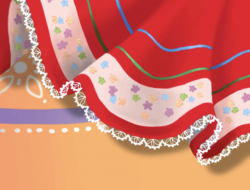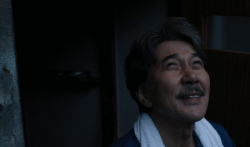Christopher Myers’ “Standing on Two Eyes” is a refreshing departure from the modern-day overkill of digital photography, confronting the unrest of urban gentrification with a collection of hauntingly beautiful and nostalgic black and white giclee (a type of fine-art ink-jet) prints.
Unlike many contemporary photographers, Myers integrates traditional techniques, affixing heated film to glass plates reminiscent of blurred-edged 19th century photos. The series Peripheral Plates—a name which evokes both the dark fringes of each piece and the abandoned margins of Myers’ native Baltimore—is a rebellion against the homogenization of modern digital imagery.
“Things have gotten a little stale,” Myers said. “There’s this all-over, obvious look of digital photography. I wanted to make work that would go the opposite direction … something with weight and substance instead of something that could be deleted from a computer.”
Myers graduated from the Maryland Institute College of Art (MICA) in ’94 and has since taken to the streets of Baltimore to capture both the city’s urban decay and rapid gentrification. While he grew up around photography—his grandfather and uncle were both amateur photographers—much of Myers’ influence comes from ‘60s abstract expressionists, like Willem de Kooning and Robert Rauschenberg, whose use of heavy paint and metalwork inspired his own exploration of a hands-on, experimental approach.
“You didn’t quite know how they would assemble an image,” Myers said of the painters.
Uncertainty is precisely what makes Myers’ images intriguing. His heating and chemical alteration leave the end result to chance, imbuing his cityscapes and portraits with ghostly stains and smudges, rough edges and torn film. Burning Bridges, one of my personal favorites, juxtaposes two versions of the same image: one, a sharply defined bridge extending from the blackened fringe across the sea; the other, a blurred ghost of the same bridge, spanning the sky towards an unknown destination.
This mysterious quality pervading all of the works is the collection’s biggest attribute. While Myers grounds every viewing experience within a recognizable context—a landscape, a bedroom, a city corner drenched in rain—the perception of strange apparitions and undefined light sources can captivate the viewer for hours on end, creating a feeling like wandering through a phantom maze with no marked exit.
The gallery’s industrial, low-key atmosphere unintentionally compliments the works. The exhibition space seems to embody the unfinished, transitional environments of Myers’ photographs. Each piece becomes more real—and more eerie—amidst the bare, slate-gray floor, chipped paint and visible piping along the ceiling.
In the back of the room hangs the eye-like tunnel of Petersburg Passage, the only photograph shot outside of Baltimore in St. Petersburg, Russia. The end of the tunnel extends the gallery space into the viewer’s own imagination, forcing us to wonder what might lie behind the closed doors. This ethereal glimpse into a run-down porthole of Eastern Europe is unique but not misplaced in the collection.
The exhibit concludes with the bleak Long Day-Assimilation, a soft, dream-like glimpse of water’s edge in an area that has since been transformed into a parking lot. The piece is emblematic of the transience of Myers’ images. While one can become pleasantly distracted by the otherworldly mystery of his photography, there is something inherently tragic about the works. They all capture glimpses of a world—and an art form—fading into the periphery amidst modern gentrification.
“Standing on Two Eyes” is showing now through Dec. 29 at Flashpoint, located at 916 G St, NW. Admission is free. For more information, see flashpointdc.org.




